|
Ringed Turtle-Dove Streptopelia risoria Tórtola Collarina
|
 |
|
Photo: M. Oberle
|
|
Ringed Turtle-Dove Streptopelia risoria Tórtola Collarina
|
 |
|
Photo: M. Oberle
|
|
IDENTIFICATION: Light gray below, with a light brown back and a pointed tail; this species has a black collar around the back of the neck. Length: 26 cm.; weight: 130-166 g. VOICE: A three-note call. Audio (M. Oberle). HABITAT: Cities and towns, usually near houses. HABITS: Often seen perched on wires, or foraging on streets or gardens near houses. It feeds on seeds and insects. The female lays 1-2 eggs, which are incubated for 14-15 days. Young fledge at 15 days. STATUS AND CONSERVATION: A domesticated species that occasionally breeds in the wild in Puerto Rico (Lajas, Cabo Rojo). RANGE: Over much of the world, farmers and hobbyists keep the Ringed Turtle-Dove as a pet, or for food. The Ringed Turtle-Dove is regularly seen at La Parguera and has nested in that area. TAXONOMY: COLUMBIFORMES; COLUMBIDAE. Some taxonomists do not consider this a separate species, but rather the domesticated form of the African Collared-Dove (Streptopelia roseogrisea). The wild type of the African Collared-Dove is native to northern sub-Sahara Africa and the Arabian Peninsula. The larger Eurasian Collared-Dove, Streptopelia decaocto, was introduced to the Bahamas from Europe, and has spread rapidly into southeastern North America, Cuba, Montserrat, Martinique, Dominica, and St. Kitts and Nevis over the last two decades. It only reached Puerto Rico in the late 20th Century. The Eurasian Collared-Dove is larger than the Ringed-Turtle Dove and has dark gray, rather than white undertail coverts. The black marking at the base of the underside of the tail extends down the outer tail feathers to form a "W" shape, as opposed to the simple black band on the Ringed-Turtle Dove. |
|
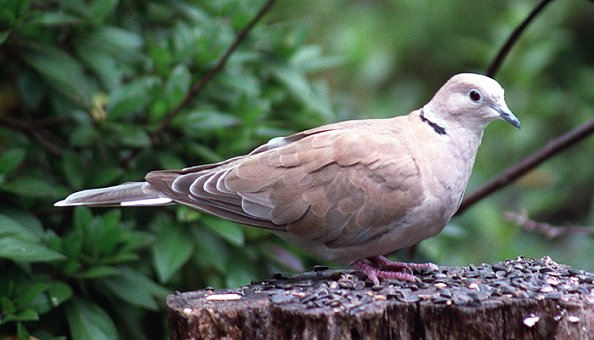 |
|
|
Photo: J. Wilson
|
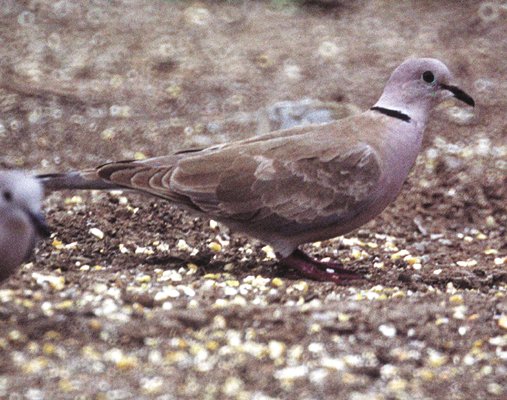 |
|
|
Photo: M. Oberle
|
 |
|
Photo: M. Oberle
|
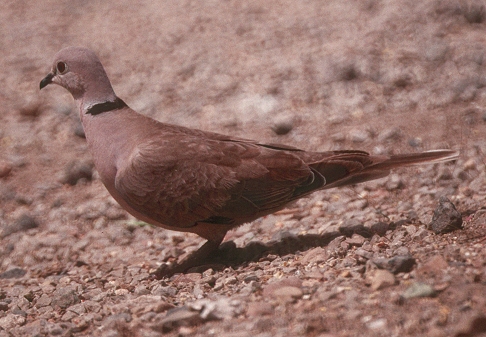 |
|
Photo: M. Oberle
|
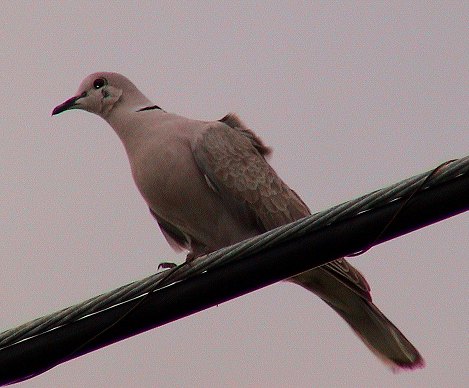 |
|
Photo: R. Rodríguez Mojica
|
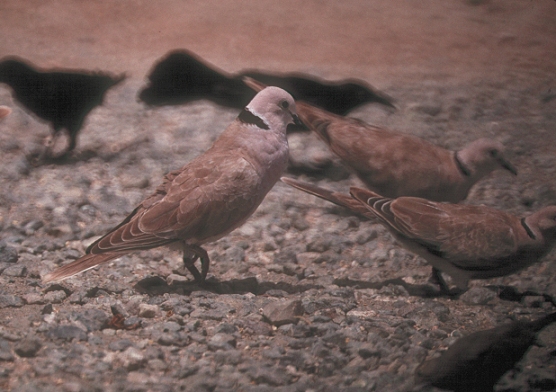 |
|
Photo: M. Oberle
|
|
References Camacho Rodríguez, M., J. Chabert Llompart, and M. López Flores. 1999. Guía para la identificación de las aves exóticas establecidas en Puerto Rico. Depto. de Recursos Naturales y Ambientales, San Juan, PR. del Hoyo, J., A. Elliott, and J. Sargatal, eds. 1998. Handbook of Birds of the World, Vol. 4. Sandgrouse to cuckoos. Lynx Edicions, Barcelona. Gibbs, D., E. Barnes, and J. Cox. 2001. Pigeons and doves: A guide to the pigeons and doves of the world. Yale University Press. Johnson, K. P., S. de Kort, K. Dinwoodey, A. C. Mateman, C. ten Cate, C. M. Lessells, and D. H. Clayton. 2001. A molecular phylogeny of the dove genera Streptopelia and Columba.. Auk 118(4):874-887. Raffaele, H.A. 1989. A guide to the birds of Puerto Rico and the Virgin Islands. Princeton. Raffaele, H.A. 1989. Una guía a las aves de Puerto Rico y las Islas Vírgenes. Publishing Resources, Inc., Santurce, PR. Raffaele, H.A., J.W. Wiley, O.H. Garrido, A.R. Keith, and J.I. Raffaele. 1998. Guide to the birds of the West Indies. Princeton. Romaga, C. M. and T. McEneaney. 1999. Eurasian Collared-Dove in North America and the Caribbean. North American Birds 53:348-353. Smith, P.W. 1987. The Eurasian Collared-Dove arrives in the Americas. Am. Birds 41:1370-1379. Ringed Turtle-Dove, Spanish text Next related species in taxonomic order Previous related species in taxonomic order |
|